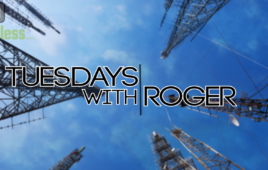Spectrum, spectrum, spectrum.
We’re always hearing from carriers about the need for more spectrum. But while they certainly may want more spectrum, MoffettNathanson analysts this week said the shockingly low prices in the latest round of the FCC’s ongoing low-band spectrum auction show that it’s time to reevaluate the idea of spectrum as an increasingly valuable commodity.
That is, it’s a buyer’s market now.
In a Tuesday blog post, MoffettNathanson analysts pointed out that in Stage 3 of the incentive auction the prices per megahertz POP for spectrum were already significantly below those from the AWS-3 auction in the top 20 markets. In New York City, the cost had dropped from $5.03 per MHz POP (BEA) in the AWS-3 proceedings to just $1.99 in the incentive auction, and from $5.55 per MHz POP in Chicago in the AWS-3 auction to just $1.34 in the Stage 3 auction.
But with the new $10B clearing cost in Stage 4, MoffettNathanson analysts noted spectrum prices will fall even further, to an average of just 38 cents across all markets, down from an average of $2.71 per MHz POP in the AWS-3 auction.
In contrast to the assertions of Max Media CEO Gene Loving, the firm said these low prices don’t necessarily mean the auction is a failure – indeed, the mechanisms have done exactly what they were supposed to do – but they do require turning away from the notion that spectrum is inherently valuable on its own.
“Spectrum is not a commodity,” MoffettNathanson analysts wrote. “The simple facts that demand for wireless data is rising, and that the amount of spectrum is finite, are not sufficient on their own to yield rising prices.”
According to the analysts, part of the downturn in spectrum prices relates to carrier’s increasing use of small cells instead of spectrum to boost capacity. But other factors, like stretched budgets across the board and a preference for spectrum in certain bands are also contributing to the slack. And new, lower comparison prices for spectrum could have a big impact on companies like Dish Network and Sprint, who were hitherto expecting top dollar for their airwaves, the analysts said.
In a Sunday note, BTIG’s Walter Piecyk estimated provisional winning bids in Stage 4 would start with a $17.6 billion target – and could rise from there if active bidding from forward auction participants resumes. Piecyk observed auction pricing rises by 5 percent each round as long as demand is higher than supply, but also noted demand currently outpaces supply in just 38 percent of markets.
“It’s possible that more than one forward bidder decided to wait for a larger decline in the reverse auction before broadening their bids into smaller markets or make their final moves on the largest markets,” Piecyk wrote. “It’s still plausible that big city spectrum owners can yield more than $1.50/MHz/POP in this auction, but smaller market’s stations are likely to be paid little to nothing.”
But that would all be moot if the auction moved into a Stage 5 reverse auction, which would bring even lower prices for broadcasters, he said.
Filed Under: Telecommunications (spectrums)




